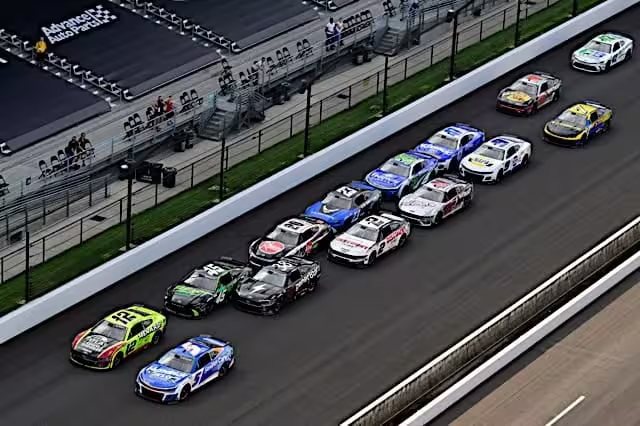Unless you have been in a tower at a race track and actually officiated a race, you have no idea how complex the task is. There is action taking place in all directions and any decision you make could make or break someone’s race. Once a decision is made, it is virtually impossible to correct it if you ultimately decide you were incorrect. There are numerous rules that have to be enforced and different situations can even result in different applications.
The only thing that fans and competitors alike ask for is that rules be applied consistently.
We hear it all of the time from stick-and-ball sports. A foul in the first minute is a foul in the last minute. You do not call things any differently depending on the time within the contest. If a pit crew member is over the wall too soon, it is the same penalty on lap 10 as it is on lap 210. Speeding entering the pits is the same penalty on lap 20 or lap 180. Violation of the blend line exiting the pits is a violation at the beginning of the race or at the end of the race.
Unfortunately, we have seen this more times than we can count: a car spins early in a race and the caution flag flies, even though the driver was able to put the car in gear and drive away. Late in a race, the same spin happens and the flag man holds the caution until the last possible second, especially if it lets the leader take the white flag to make the race official.
The problem isn’t the holding of the flag late in the race or the throwing at the instant of spin early in the race. The problem is that the same incident receives different treatment depending on the point it occurs in the race. The ultimate frustration is it doesn’t always happen that way, and that is even more frustrating.
Looking at the finish of the Brickyard 400 on Sunday (July 21) at Indianapolis Motor Speedway, when Ryan Preece spun off of turn two, the caution should have flown when the smoke appeared from his tires and he headed toward the infield wall.
Once he made contact with the wall, any subjectivity should have been completely eliminated. We have seen it and had it explained in the past. When a car makes contact with a wall, the caution must fly so that the AMR Safety Crew can immediately roll to get to the driver in case of injury. There cannot be subjectivity about intensity of the impact, because you never know. Anyone who saw the Dale Earnhardt wreck didn’t think it was that big of a hit when they first saw it. Race…
Click Here to Read the Full Original Article at …

